We had been planning to go and see the renovation of the Musée du Moyen Âge, otherwise known as the Musée de Cluny, for some months.
Museography
We went there on a Saturday morning when it opened. I highly recommend going early to enjoy the almost empty rooms. There were a lot of people getting ready to go in when we came out around 11am.
I forgot to take a picture of the new entrance to the museum, which is very modern, but blends well with the old building. The entrance is no longer in the courtyard of the Hôtel des Abbés, but on rue du Sommerard, which leads to boulevard Saint-Michel. You can see the new building on the museum’s website.
The renovation and the new museography give a simplified and brighter visit. Goodbye to the labyrinthine route and the dark rooms. The works are highlighted and the contemporary supports are completely forgotten.
Collections
The frigidarium
We could not visit the frigidarium because an exhibition was being installed. This is the only remaining room of the Cluny baths. There are also some underground spaces left. The frigidarium is the cold room of the Roman baths.
The tour is chronological and starts with Antiquity and early medieval art.
This ivory statue of Ariadne from Constantinople, carved in the 6th century, is magnificent. You can see a 3D version on the museum’s website. I recommend that you go to the website before or during your visit, you will get a lot of information about the works. You can even find the room cards there.
Between roman art and early gothic art
The sculpture rooms have always been my favourite and I was very happy to be able to see them so closely. The museography of these rooms is very good.
Of course you have to imagine all this with colours. Some traces remain on some sculptures. If you want to know more about colour in the Middle Ages, you can read this article (in french) from the Louvre Lens, which gives you an idea of what the colours in the churches might have looked like.
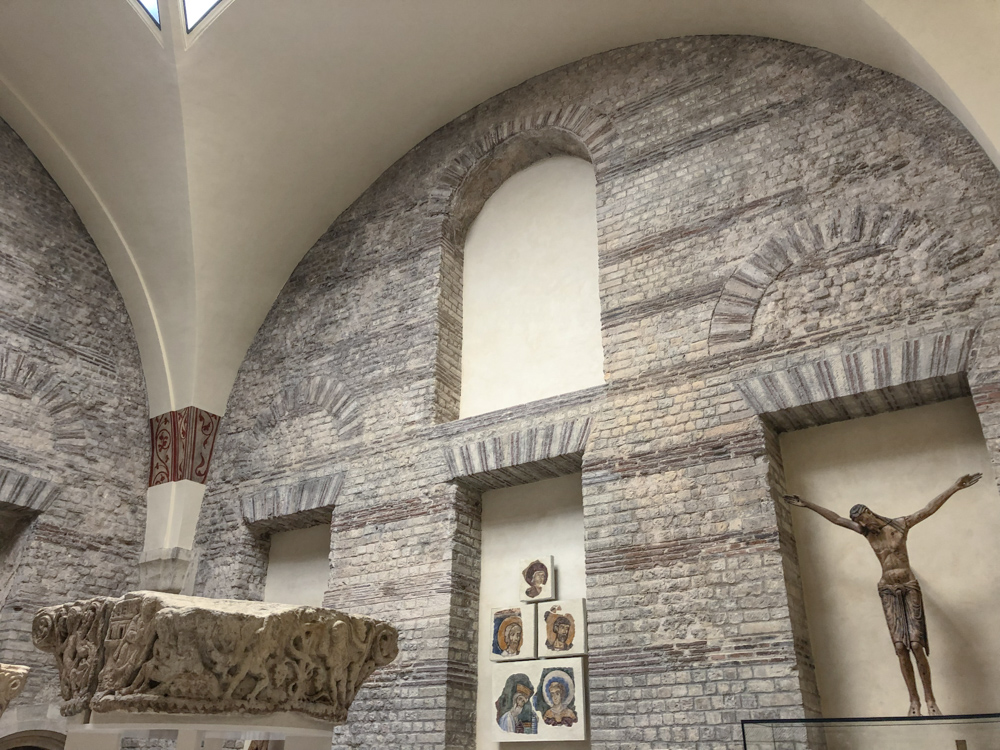
We took the opportunity to review Christian iconography.
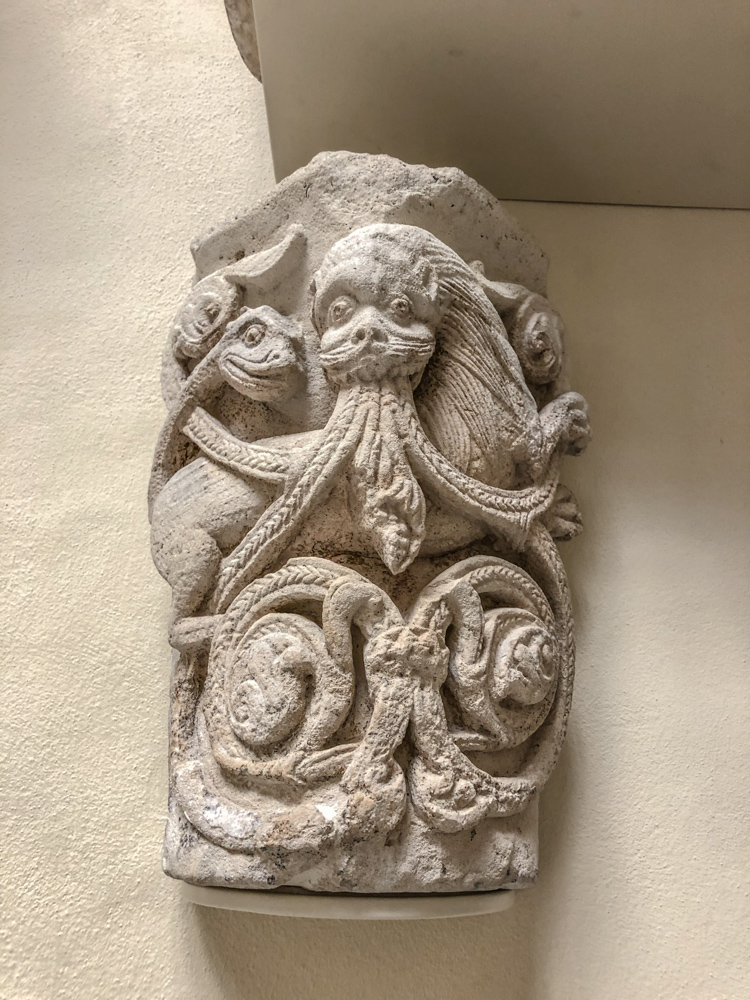


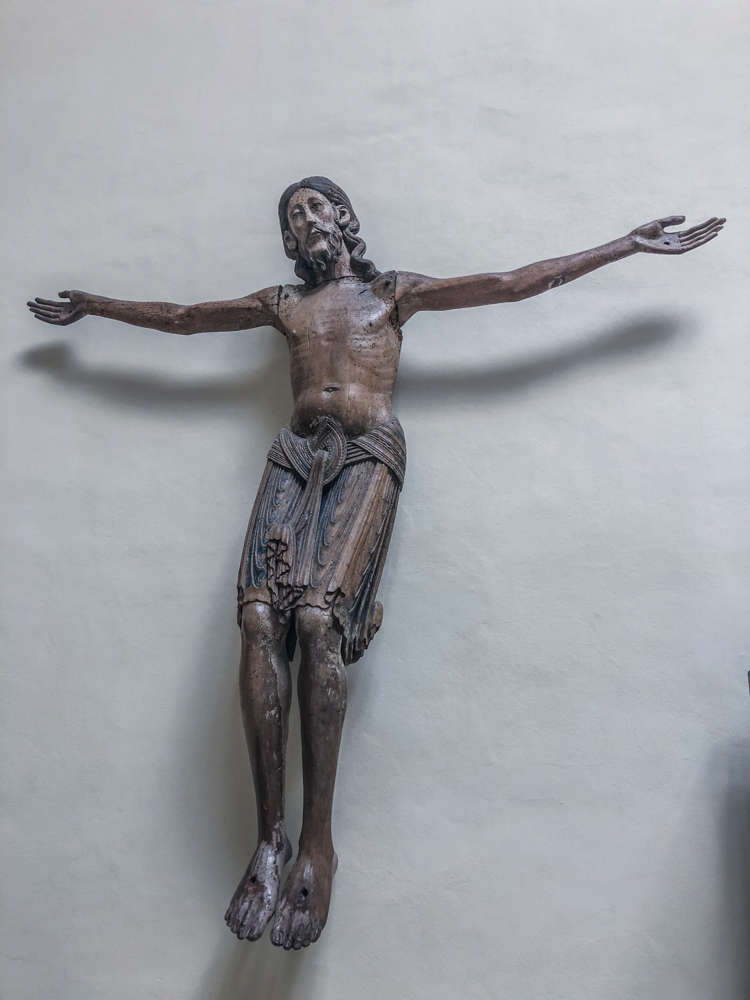

After visiting this room, I must admit that I regretted not taking my Sony with me. I think I could spend hours photographing sculptures. There are several articles with photos of sculptures on the blog (here, ihere, here, here).
Sculptures of Notre-Dame de Paris
The six portals of Notre-Dame are richly decorated with sculptures from the mid-12th to mid-13th centuries. These sculptures allow us to observe the different phases in the development of Gothic sculpture. They are considered as references all over Europe since their creation.
Many sculptures were destroyed and detached during the Revolution. About 350 fragments were found in 1977 during work in a private mansion.
The most impressive sculpture in this room is the one representing Adam. Probably made by Pierre de Montreuil, this sculpture is inspired by the aesthetic canons of Antiquity, which remains quite rare in Gothic sculpture. It must have been accompanied by an Eve, unfortunately lost. Its style is in complete contrast to the other sculptures in the room.

The first floor
I must admit that I completely forgot to take pictures of the cartels #shame. So I won’t be able to detail all the works I will show you.
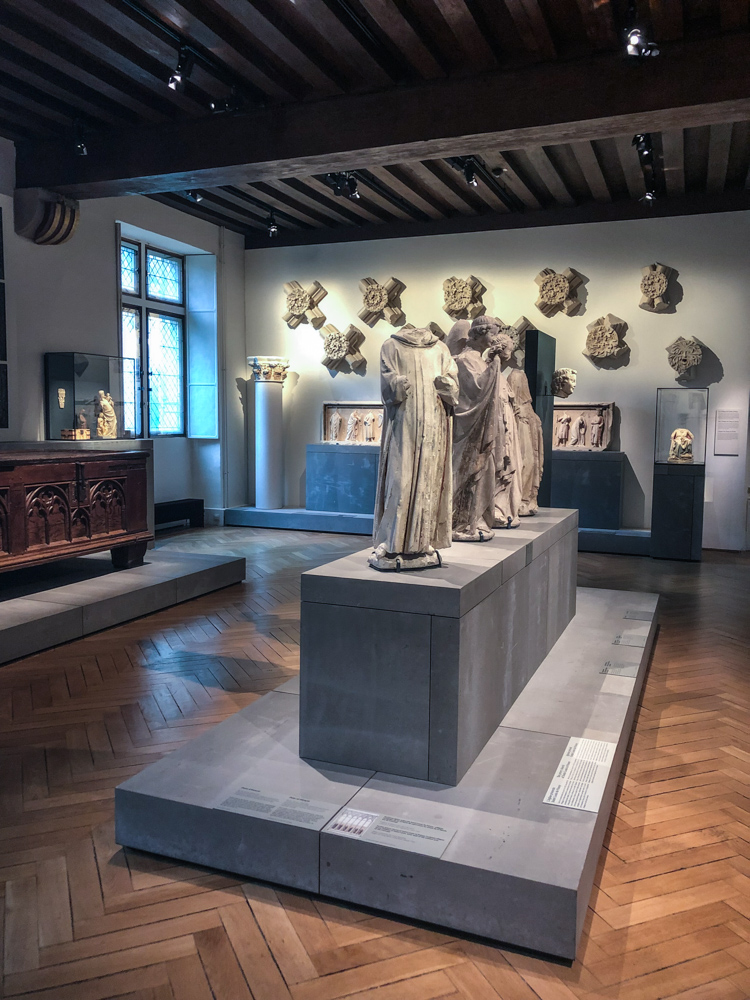
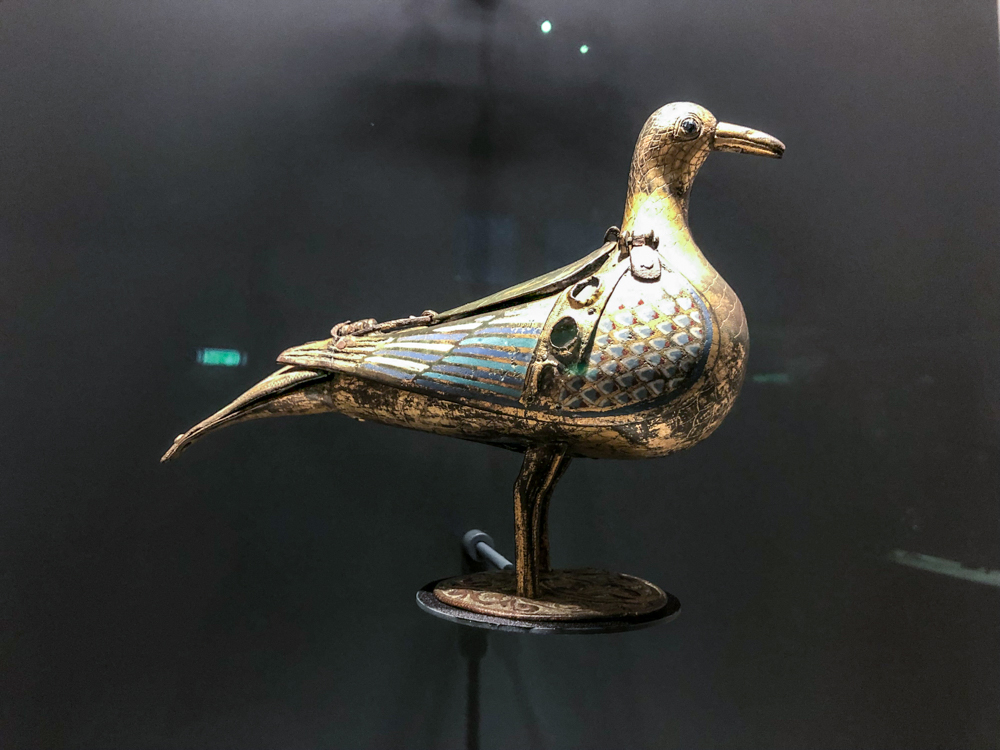


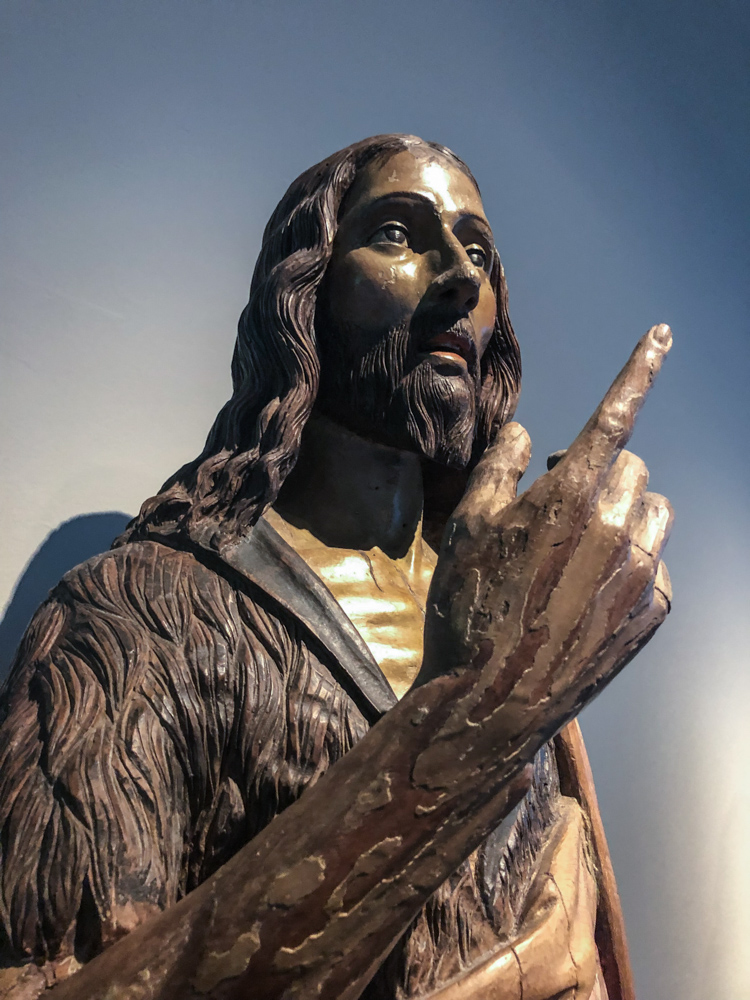
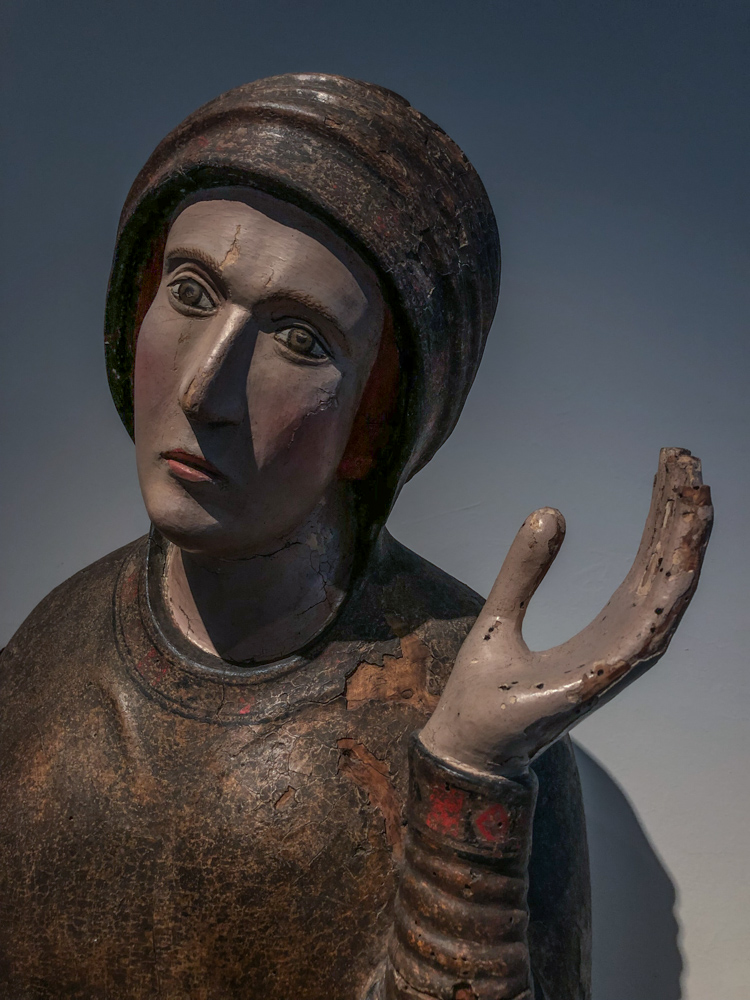
I fell in love with the finesse and elegance of this 16th century sculpture of Saint Barbara (on the right).


The small chapel with its ribbed vault is a must-see. The hair of the Virgin and Child (right) is beautifully chiselled. Although I have a preference for the Italian Renaissance, I also like the work of the German sculptors of this period.
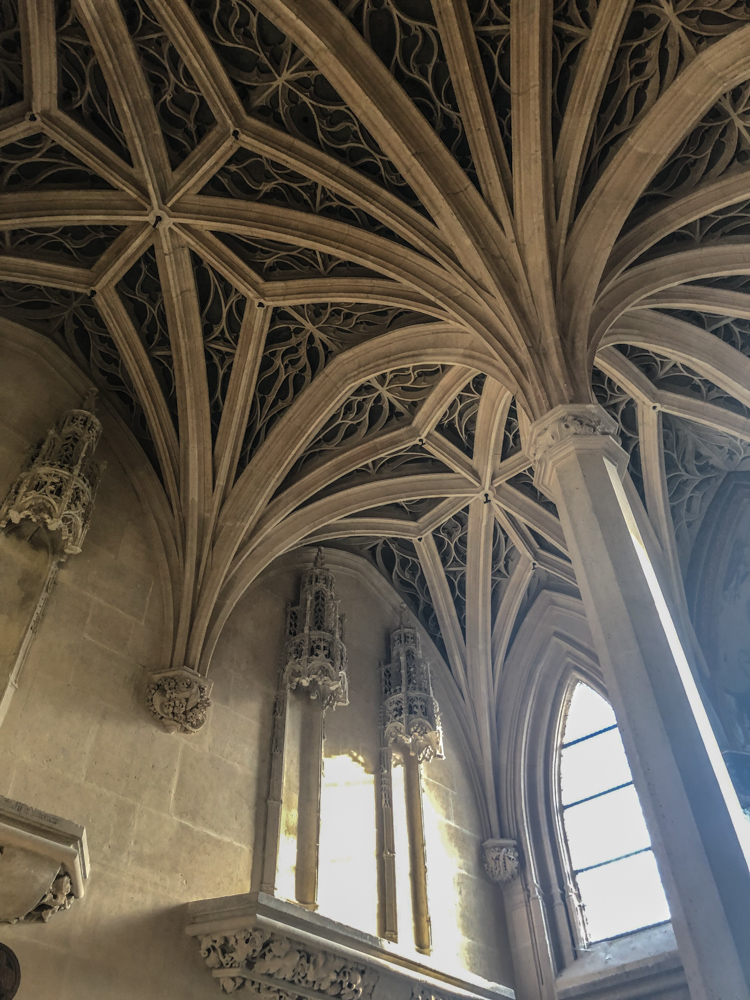

Obviously, it is impossible to visit the museum without going through the rooms of the Lady and the Unicorn. As there were very few people, we were able to have a good look at each tapestry. The hanging is composed of five tapestries representing the Five Senses (Touch, Taste, Smell, Hear, Sight) and a sixth tapestry, with a blue tent and the inscription my only desire, the meaning of which is rather mysterious. The name of the commissioner is a matter of debate, but the coat of arms has enabled us to identify the family who wove these tapestries in the 16th century: the Le Viste family, originally from Lyon.
After this beautiful visit, we crossed the Luxembourg garden to go to our lunch place, but I’ll tell you about that in another post.
I hope you enjoyed the visit. See you soon!




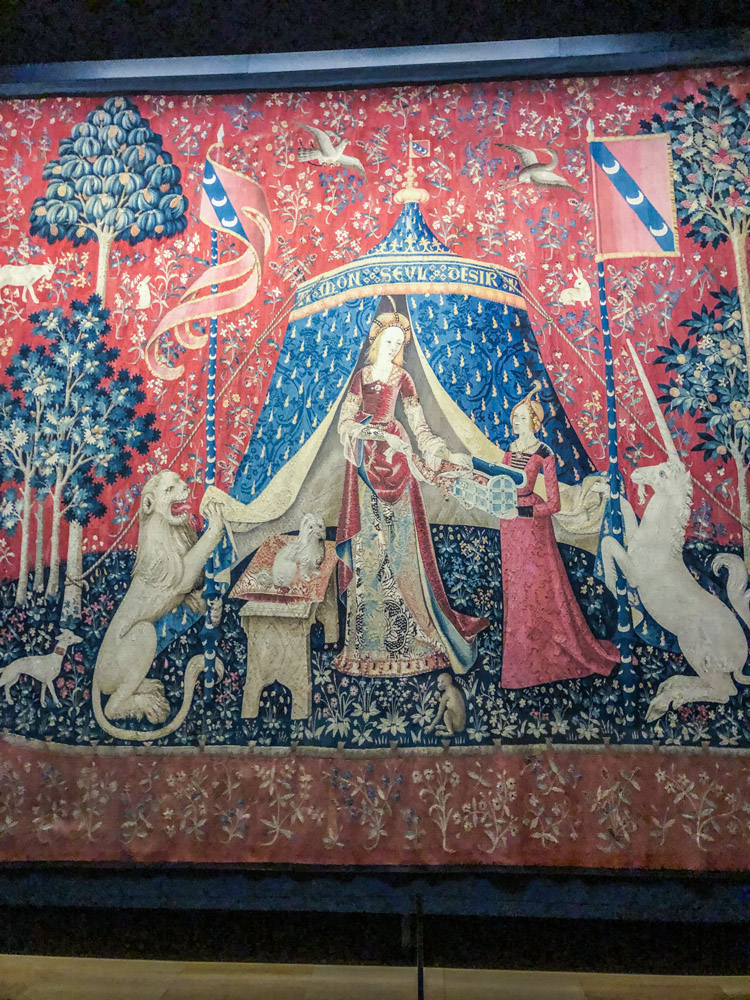

One thought on “THE RENOVATED MUSEUM OF THE MIDDLE AGES IN PARIS”